Iran’s Official News Agency Threatens US Forces In Syria
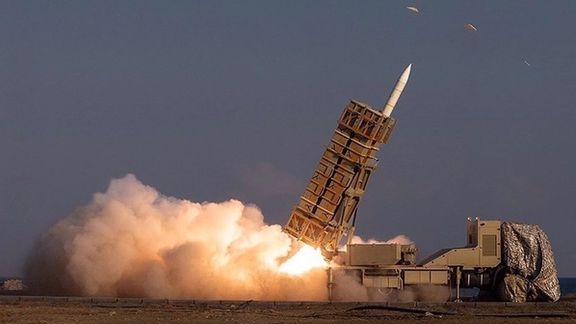
Iran has once again implicitly threatened US forces in Syria, after drone and missile attacks on Thursday and Friday by militias under the command of the IRGC.

Iran has once again implicitly threatened US forces in Syria, after drone and missile attacks on Thursday and Friday by militias under the command of the IRGC.
A triumphant article published Sunday in the official IRNA news agency was headlined, “25 American bases in Syria await the missiles of the Resistance.”
Iran’s Islamic regime calls its proxy forces in the region “the resistance front”.
IRNA said that “Yankees did not sleep all night” last night out of fear of fresh attacks by the “resistance.” It added that so far militias have fired 60 rockets, missiles and a suicide drone on US bases.
“All American occupiers were on alert and Yankee helicopters and drones were patrolling all night,” the agency added.
The United States maintains a small force of around 900 servicemen and an undisclosed number of contractors at a few bases in eastern and southern Syria, but IRNA claimed there are 22 large and 3 small “illegal” bases.
After the first attack on a US base on Thursday that killed a contractor and wounded several servicemen, the US retaliated by bombing installations used by the Iranian militia.
Iran’s national security council Saturday warned the US against further attacks, threatening immediate retaliation. The foreign ministry in Tehran also issued a statement at the same time calling the US retaliatory strike a “terrorist aggression.”
The article went on to repeat previous unsubstantiated accusation that the US created the Islamic State group (ISIS) to destabilize Syria. It also said that the US maintains a base in southern Syria to deny land access from Iran to Syria and Lebanon, not to allow “the reinforcement of the resistance front.”
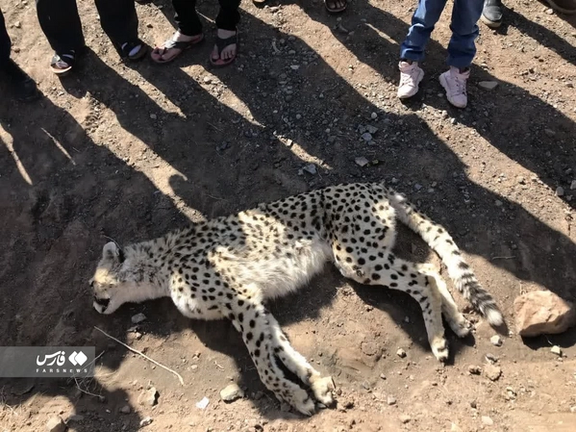
Iranian officials say another Asiatic cheetah has been killed in a car accident near the city of Miami in Semnan Province, east of Tehran.
Director General of Environmental Protection of Semnan province, Bahram Ali Zahiri said Sunday that in the autopsy performed on the dead cheetah, it was revealed that she was pregnant with three cubs.
The Asiatic cheetah is a critically endangered subspecies currently only surviving in Iran. It lives in protected areas in the eastern-central arid region of Iran, where the human population density is very low.
In December 2017, fewer than 50 individuals were thought to be remaining in three subpopulations that are scattered over 140,000 km2 (54,000 sq mi) in Iran's central plateau.
As of January 2022, the Iranian Department of Environment estimates that only 12 Asiatic cheetahs, 9 males, and 3 females, are left in Iran.
The news agencies in Iran have reported that during the last 10 years, at least 20 cheetahs have been lost on the country’s roads.
Although 52% of recorded deaths of cheetahs are related to road accidents, Iran’s Department of Environment has not taken any action to make roads safer.
In other countries, roads have been fenced to protect animals and wide overpasses have been built in the natural habitats of animals for their safe passage.
However, Iranian officials say there is no budget allocated to erect fences around roads or install speed cameras for cars in the main habitat of Asiatic cheetah.
Iran has arrested and jailed 8 ecologists who were helping with wildlife protection on unfounded charges and after sham trials.
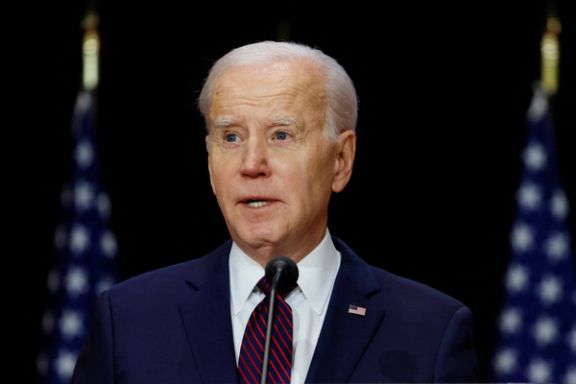
As Iran’s tit-for-tat war with the US becomes more vocal, the Biden administration’s hand is being forced to take firmer action against the regime and its proxies.
Following an Iranian attack on US troops, Gabriel Noronha, the former State Department Iran envoy tweeted: “Iran cannot match us on the escalation ladder. But as long as we play tit-for-tat with their proxies, Iran gets a pretty good deal.
“If Iran wants to kill Americans overseas and at home, we could make them pay where it hurts them: their pocketbooks.”
In a strong warning to the US, which carried out a rare strike on Iranian-linked bases in Syria last week, Iran has openly defended its militia there, its regional proxies an issue on which it prefers to stay silent.
Foreign ministry spokesperson Nasser Kanaani told state media last week: "Iran's military advisers have been in Syria at the request of the Syrian government to help this country fight terrorism, and shall remain by Syria's side to help establish peace, stability and lasting security.”
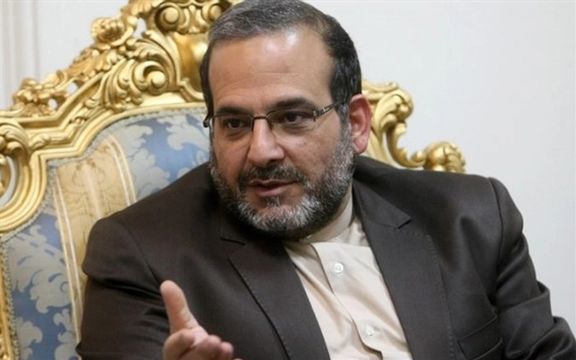
Supreme National Security Council spokesman, Keyvan Khosravi, responded with equally strongly worded threats, showing a united front in allegiance with its militia in Syria. “Any pretext to attack bases created at the request of the Syrian government to deal with terrorism and Islamic State elements in this country will be met with an immediate counter-response,” he said.
It is an interesting turnaround, not ignored by the world’s Iran watchers. Jason Brodsky, the policy director at United Against A Nuclear Iran, tweeted: “In the past these threats came from an operations room with a vague name “Allies of Syria”, which preserved plausible deniability for Tehran. But in a sign of how emboldened Islamic Republic feels Iran’s SNSC is going public quite clearly with threats.”
The Syrian Observatory for Human Rights claims the US strike killed eight pro-Iranian fighters. Thursday’s attack was one of the deadliest exchanges between the US and Iranian-aligned forces in years, retaliation for a drone drone attack that left one American contractor dead and another wounded along with five injured US troops.
Semantics on the nature of the attack were typically murky. Washington said the drone used in the attack was of Iranian origin while Iran claimed the site the US hit was ‘civilian’, a rural development centre and a grain centre near a military airport.
Speaking on a state visit to Canada last week, Biden reiterated that “the United States does not, does not seek conflict with Iran,” but said Iran and its proxies should be prepared for the US “to act forcefully to protect our people” and warned “we are not going to stop”.
Biden chooses his words carefully. While Tehran’s growing entrenchment in Syria has drawn regular Israeli air strikes, American aerial raids are rare. The US has been raising the alarm about Iran's drone program but critics say the Democrats are sitting tight to try and cling on to the last shreds of hope for reviving the nuclear deal, the JCPOA, which collapsed last year amidst Iranian intransigence.
Iran is obviously undeterred by threats to crack down on the regime’s militia, and Biden’s critics are pushing for more affirmative action.
When doing the numbers, it is clear Biden is more than reluctant to step into the military arena with Iran, which is not shy of using its proxies around the region. In spite of a recent detente with archenemy Saudi Arabia, the Houthis in Yemen have continued with military action against forces led by Saudi, which could yet jeopardize the path to peace for Iran and its powerful neighbor.
Of 78 attacks on US facilities under the Biden administration, this is a rare retaliation to have taken place. However, although US forces stationed in Syria have been attacked with drones before, deaths too, are rare, attacks more a show of force than a full-blown confrontation.
The US Department of Defense claimed its response last week was “proportionate”, aimed at minimizing casualties, while critics such as Noronha slammed it as “weak. “Just hours after the Pentagon said they were trying to minimize Iranian casualties, their forces attacked three of our bases. Weakness is deadly and provocative,” he tweeted.

While the Islamic Republic still claims to have no role in the war in Ukraine, Britain announced that Russia has increased the use of Iranian-made drones in its war against Ukraine.
The British Ministry of Defense announced on Sunday the widespread use of Iran-made drones by Russia in the last few days.
“Since the start of March 2023, Russia has likely launched at least 71 Iranian-designed Shahed series one-way attack uncrewed aerial vehicle (OWA-UAVS) against targets across Ukraine,” reads a tweet by the Ministry of Defense.
Kyiv reported a large Russian drone attack using Shahed UAVs on March 22 to target civilian areas.
According to the British Ministry of Defense, Russia is likely launching Shaheds from two axes: from Russia’s Krasnodar region in the east and from Bryansk Oblast in the north-east.
“This allows Russia flexibility to target a broad sector of Ukraine and decreases flying time to targets in the north of Ukraine. It is also likely to be a further attempt to stretch Ukrainian air defenses,” added the report.
The report comes a few days after Iran’s Supreme Leader Ali Khamenei in his speech in the religious city of Mashhad categorically rejected participation in the war in Ukraine.
"They falsely said that Iran is participating in the war in Ukraine, this is not the case at all," he stressed.
Western countries have repeatedly sanctioned the Islamic Republic for sending drones to Russia for use in the Ukraine war.
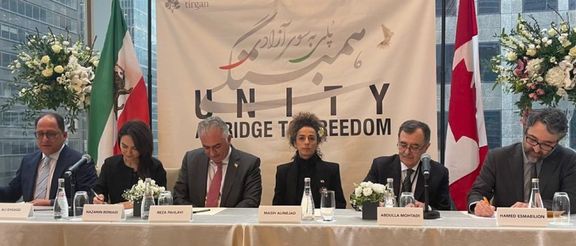
Prominent Iranian opposition figures who have joined hands to create a united front against the Islamic Republic held another event reiterating determination to end the regime.
Exiled Prince Reza Pahlavi, Canada-based activist Hamed Esmaeilion, whose daughter and wife were killed in the shooting down of Flight PS752 by Iran’s Revolutionary Guard in 2020, as well as US-based, journalist and women’s rights activist Masih Alinejad, actress and activist Nazanin Boniadi and Secretary General of Komala Iranian Kurdish party Abdullah Mohtadi held a panel in Toronto, Canada, on Saturday to discuss Iran's democracy movement.
They also delivered speeches during the street events held on the sidelines of the meeting, titled “Unity; A Bridge To Freedom.”
The group, which calls itself the Alliance for Democracy and Freedom in Iran, announced its existence in a February event at Georgetown University's Institute for Women, Peace and Security (GIWPS) -- titled ‘The Future of Iran’s Democracy Movement' and issued a Charter of Solidarity and Alliance for Freedom (Mahsa Charter) earlier in March.
Defending the contents of the Mahsa Charter, Mohtadi talked about “the spirit of pluralism” as a necessity to overthrow the Islamic Republic. He pointed out that the charter is based on minimum common grounds to defend the rights of minorities and ethnic groups, which paves the way for a transition from the Islamic Republic. He noted that the united opposition is trying to have a coalition as inclusive as possible.

Prince Pahlavi reiterated his ideas for a democratic Iran, stressing the need for joint efforts to hold a free election in the country. "The first rule of the democratic system is to respect the ballot box,” he said.
"I firmly believe in the power of the people. Let us not underestimate the power of public opinion, because it creates the necessary motivation to feel responsible and accountable," the exiled prince said.
He said the Iranians inside the country as well as the expatriates should prove to the world that the overthrow of the regime would not leave a power vacuum in the country. “Iran will not become Syria, because we have so many capable and efficient experts inside and outside the country."
He also talked about supporting the labor strikes as the most important factor to put pressure on the regime from inside Iran, adding that experts are examining ways to create a fund to support strikes and create channels to transfer money to the striking workers.
During his speech to a crowd of Iranians who had gathered outside the venue, Pahlavi greeted Nowruz – the Persian new year that started on March 21 – expressing hope that the next Nowruz celebrations would be held in Iran, free of the regime. "We hope this will be the last Nowruz in exile and we Iranians can celebrate freedom in our own country."
Alinejad, who is known for her frank and practical views about the regime, also defended the Mahsa Charter, acknowledging that a lot of people criticized its content for some phrases that seemed not to reaffirm the territorial integrity of Iran. Emphasizing that "the most separatist person" in Iran is Supreme Leader Ali Khamenei, she said, "We have gathered together based on the minimums and we are at the beginning of a union to show a more pluralistic face of Iran."
"None of the members of the Alliance for Democracy and Freedom in Iran claim a 100-percent agreement, but we understand the power of solidarity," she said, accusing the Islamic Republic of sowing discord among the opposition to ensure its survival. "Islamic Republic has survived by separating us and turning us into wandering islands,” she added, noting that the regime has labeled Kurds and Baluchis of separatism, but Kordestan and Sistan-Baluchestan provinces have become symbols of unity representing the voice of the Iranian nation.
Esmaeilion talked about mechanisms to contact representatives of other groups and ethnicities in the united opposition front, highlighting that “this revolution will bear fruit with unity and hope.” "There is no room for despair,” he noted.
Boniadi addressed the artists and celebrities who have stood against the regime, saying that “you are our role model; we are with you, and we fight for you."

UN Special Rapporteur on Iran's human rights situation says the international community is united in ensuring that those who have committed violations and violence in Iran will be held accountable.
Javaid Rehman told Iran International on Saturday that "I'm confident Iranians will get justice", but the establishment of a precise accountability mechanism in the form of international fact-finding mission is a concrete step forward.
He said there are serious instances of violations of the rights of the people since September 16, 2022, when protests erupted, while over 500 people were killed by state authorities, including 71 children.
“Accountability must now take its course and people who have committed this very serious violations of human rights must be held accountable.”
He further noted that to bring a stop to further future serious violations of human rights in Iran the international community and global media must exert pressure on Iranian authorities to respect international law and the United Nations Human Rights Council.
Rehman also urged the Islamic Republic to allow fact-finding missions so that they can assess, investigate, and hold the perpetrators accountable.
Elsewhere in his remarks, the UN Special Rapporteur expressed support for the right of the Iranian people to protest.
“They have challenged the state authorities and they have also reached out to me to say that they are suffering, and their rights are being violated. So, I would encourage these young, brave Iranian people, and I am there for the Iranian people. I would support them,” he underlined.